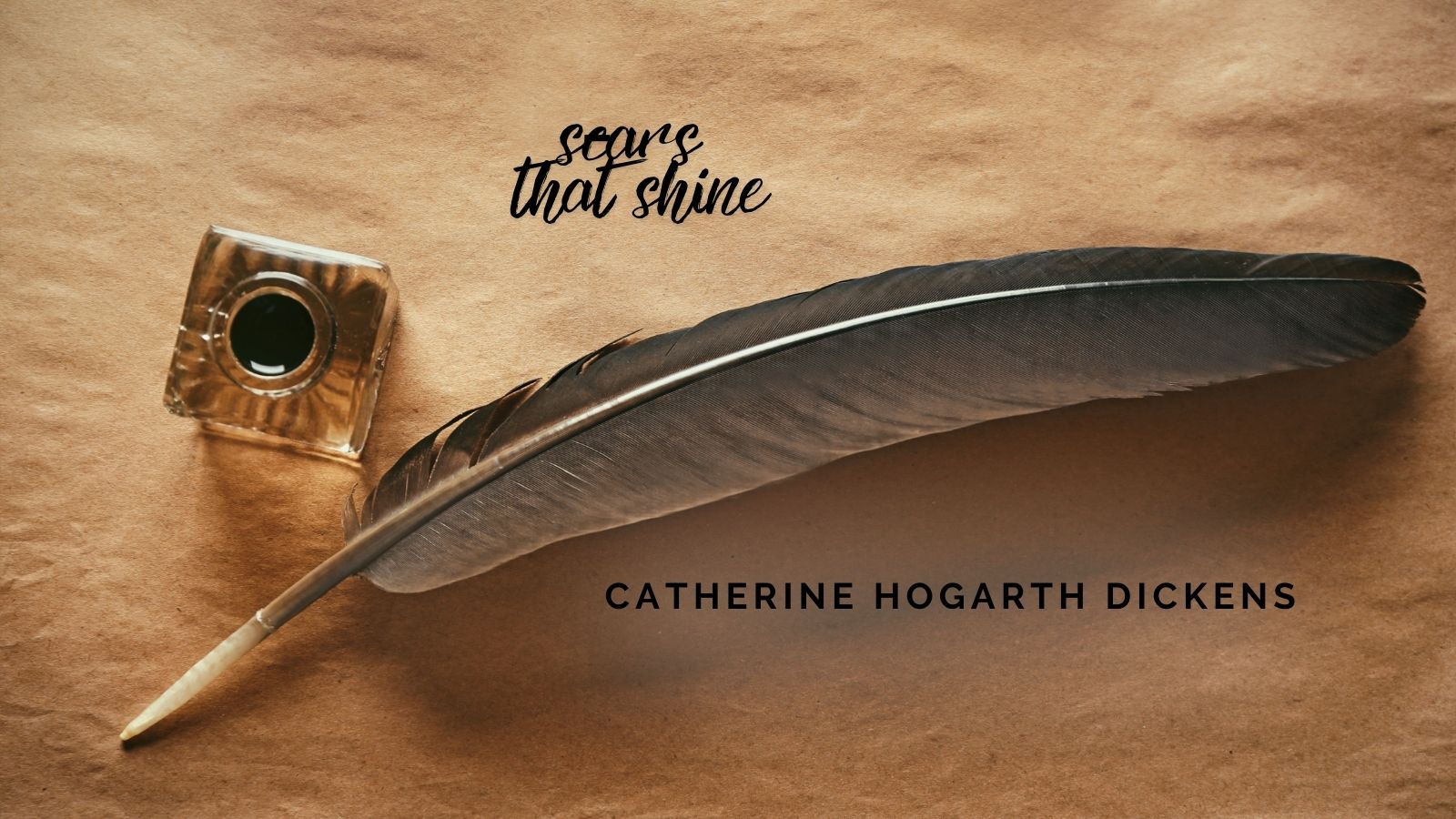
When we think of Charles Dickens, the great Victorian novelist whose works shaped literature and society, the image is almost always of the man himself – a brilliant storyteller, tireless reformer, and public figure. Rarely do we pause to remember the woman who once shared his home, his family, and the most intimate years of his life: Catherine Thomson Hogarth Dickens. Her story is one of quiet resilience, overshadowed by her husband’s towering fame, and complicated by the social expectations of nineteenth-century womanhood.
Catherine was born on 19 May 1815 in Edinburgh, the daughter of George Hogarth, a Scottish journalist and music critic. Through her father’s connections, Catherine’s family became acquainted with a young, ambitious journalist and budding writer named Charles Dickens.
Their courtship blossomed quickly, and in April 1836, just as Dickens’ career was beginning to soar with the publication of The Pickwick Papers, Catherine and Charles married. She was only twenty-one years old. The marriage began with great promise: the couple moved into a comfortable home in Bloomsbury, mingled with London’s literary and artistic elite, and soon became parents.
Over the next two decades, Catherine bore ten children, a staggering responsibility by any standard. In Victorian England, a woman’s worth was often tied to her role as a wife and mother, and Catherine fulfilled this duty dutifully, though at a high personal cost to her health and spirit.
While Dickens’ fame grew rapidly with novels like Oliver Twist, Nicholas Nickleby, and A Christmas Carol capturing the public imagination – Catherine’s life grew increasingly circumscribed. She managed the household, oversaw the children, and entertained Dickens’ friends, from actors to politicians.
But as Dickens travelled frequently and threw himself into his work, Catherine often found herself exhausted and overshadowed. Letters from those close to the family suggest she was gentle, kind, and affectionate, though perhaps not as intellectually lively or socially dynamic as Dickens demanded.
Marriage to a genius came with invisible pressures: Dickens expected admiration, stimulation, and domestic stability all at once. Catherine’s quiet personality and frequent pregnancies often left her unable to keep up with his relentless pace. Over time, cracks began to form in their relationship.
By the 1850s, the strain had become undeniable. Dickens’ dissatisfaction with his marriage was no secret among his circle, and when he met the young actress Ellen Ternan in 1857, his desire for a different life became public.
In 1858, after more than 20 years of marriage, Charles and Catherine separated. Dickens took the extraordinary step of publishing a personal statement in the press to deny rumours and control the narrative. In it, he cast Catherine as an incompatible partner – suggesting that she lacked the qualities necessary to be his wife. Victorian society, steeped in patriarchal norms, largely accepted his version of events.
Catherine was quietly removed from the household. Dickens retained custody of their children (though some remained in contact with her), while she lived alone with financial support from him. Society largely saw her as the discarded wife of a genius – a woman unfit to keep up with the great Charles Dickens.
Separated from her husband and children, Catherine endured a lonely existence. Yet she bore her situation with dignity. She never remarried, never publicly attacked Dickens, and lived a quiet life in London.
One poignant moment came near the end of her life. In 1889, shortly before her death, she gave a collection of Charles’ letters to the British Museum. With them, she included a note to her daughter Katey:
“Give these letters to the Museum, so the world may know he loved me once.”
This single sentence captures both Catherine’s heartbreak and her quiet strength. She wished to remind posterity that despite the bitterness of their separation, there was once love between them.
Catherine died on 22 November 1879, at the age of sixty-four.
In the Victorian era, a wife’s reputation was often tethered to her husband’s. Dickens’ towering status made Catherine’s position especially precarious. When he declared her unsuitable, society largely agreed without question. Friends of Dickens – and even some of their children – reinforced this narrative, portraying Catherine as a passive, uninspiring woman who failed to meet her husband’s intellectual needs.
Modern historians, however, have begun to revisit this view. Catherine was not deficient; she was a woman of her time, overwhelmed by the demands of raising ten children and married to a man whose energy and ambition were near impossible to match. Her struggles were not failings but reflections of the impossible standards Victorian society placed upon women.
In truth, Catherine embodied the quiet endurance expected of wives in her era. She fulfilled her domestic duties, raised a large family, and endured public humiliation with dignity. Her voice was muted in a world that celebrated male genius, but her story deserves to be remembered alongside her husband’s.
Today, Catherine’s life offers a different perspective on Dickens’ legacy. While his novels gave voice to the oppressed, the forgotten, and the marginalised, his own wife became one of the overlooked figures in his personal story.
Her life raises important questions about how society measures worth: Is a woman’s value only tied to her husband’s success? What do we lose when we erase women’s voices from history?
Catherine Hogarth Dickens was more than just Charles Dickens’ wife. She was a daughter, a mother, a sister, and a woman who bore the weight of expectation in silence. Remembering her today restores a measure of justice, ensuring she is not lost in the shadow of one of literature’s greatest names.







